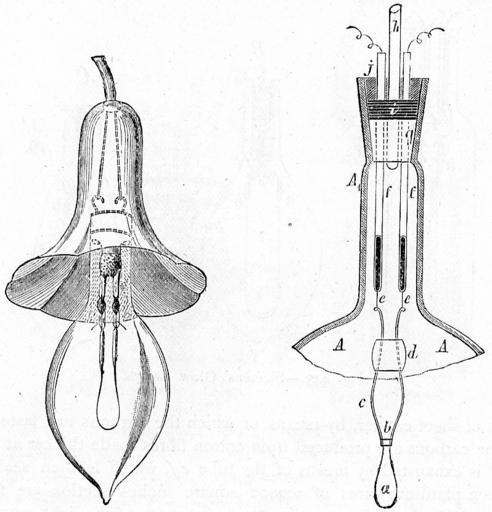MAKE A MEME
View Large Image

| View Original: | The_Lane-Fox_lamp.jpg (798x830) | |||
| Download: | Original | Medium | Small | Thumb |
| Courtesy of: | commons.wikimedia.org | More Like This | ||
| Keywords: The Lane-Fox lamp.jpg en Two wires e e which are connected with the mercury tubes f are attached to the metal springs c which are the carbon holders These springs are regulated by the slide d consisting of insulating material The tubes f and h pass through an india-rubber cork g; i is a layer of mercury and over it is a layer of cement j The glass vessel is exhausted by means of the tube h Lane-Fox prepared the carbon filaments for his lamps in the following manner Hemp threads were wound round a piece of coke having a knife-edge at one side; and the whole placed in an oven During carbonisation the threads contracted and were cut by the knife-edge In this manner carbons of the same length were obtained Benzole or similar vapour was used for carbonising the filaments whilst the carbons were made white-hot by means of electric current The ends of the filaments were connected with a short piece of wire short-circuited and again a current passed through them The lamp was constructed in different sizes and for example for an intensity of 87 candles 66 volts and 0 673 ampere were required 1886 Fig 444 at http //archive org/stream/electricityinse02wormgoog page/n503/mode/1up page 465 in Electricity in the service of man by Alfred Ritter von Urbanitzky edited with copious additions by Richard Wormell Published by Cassell Company 1886 Unknown illustrator PD-old-100 Early incandescent light bulbs Scans from 'Electricity in the service of man' 1886 | ||||